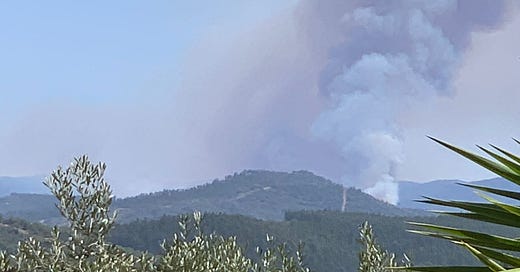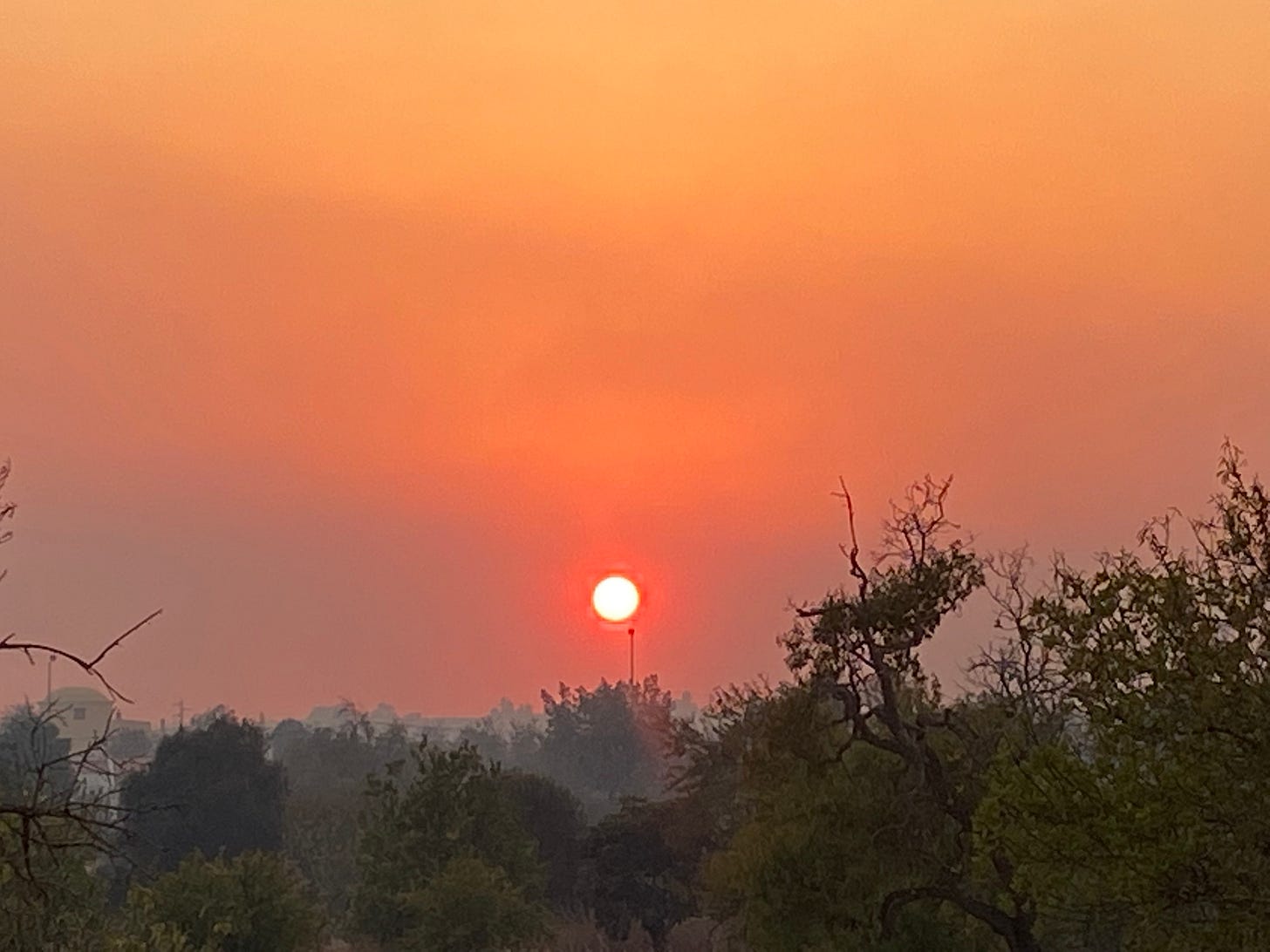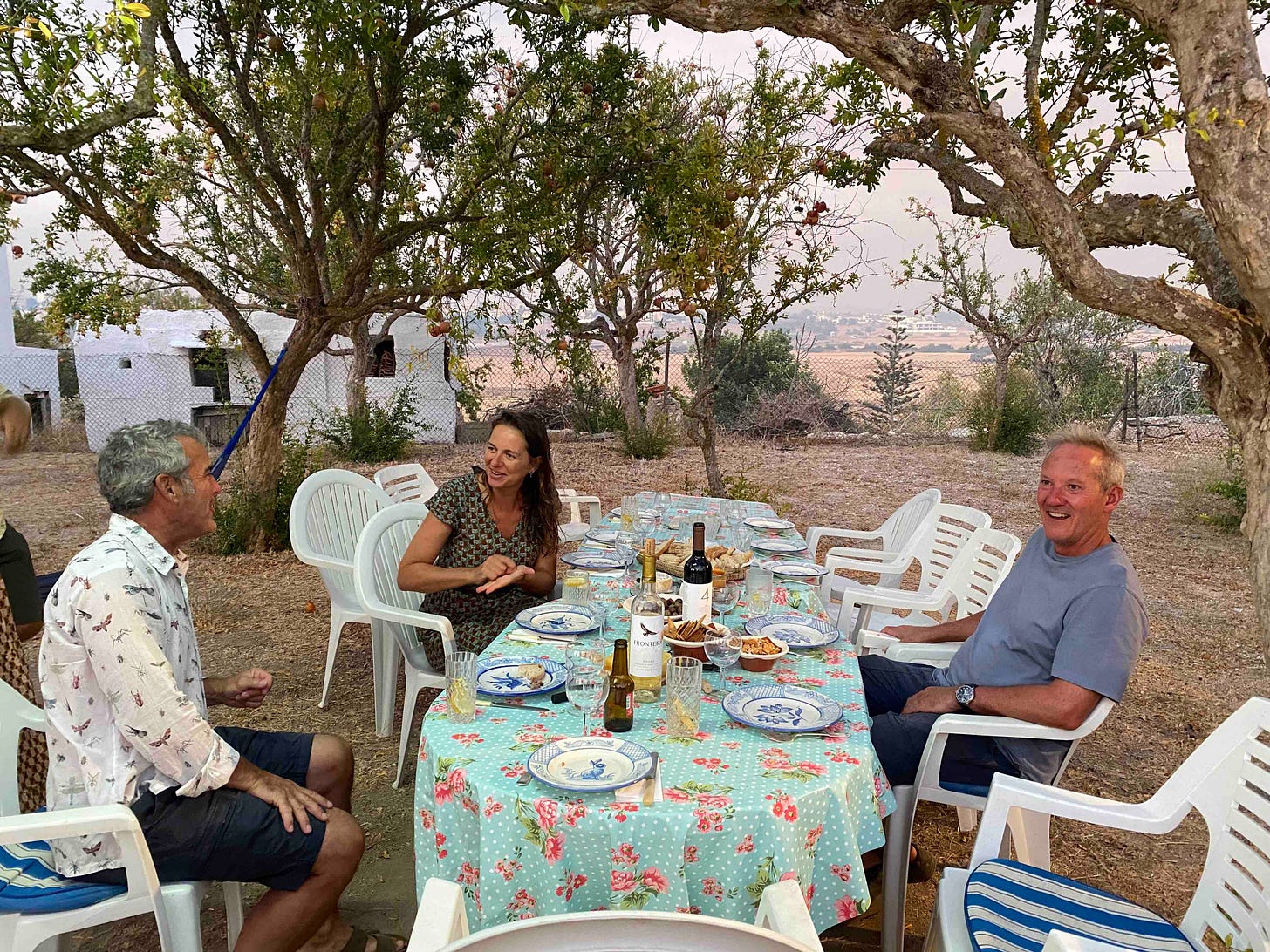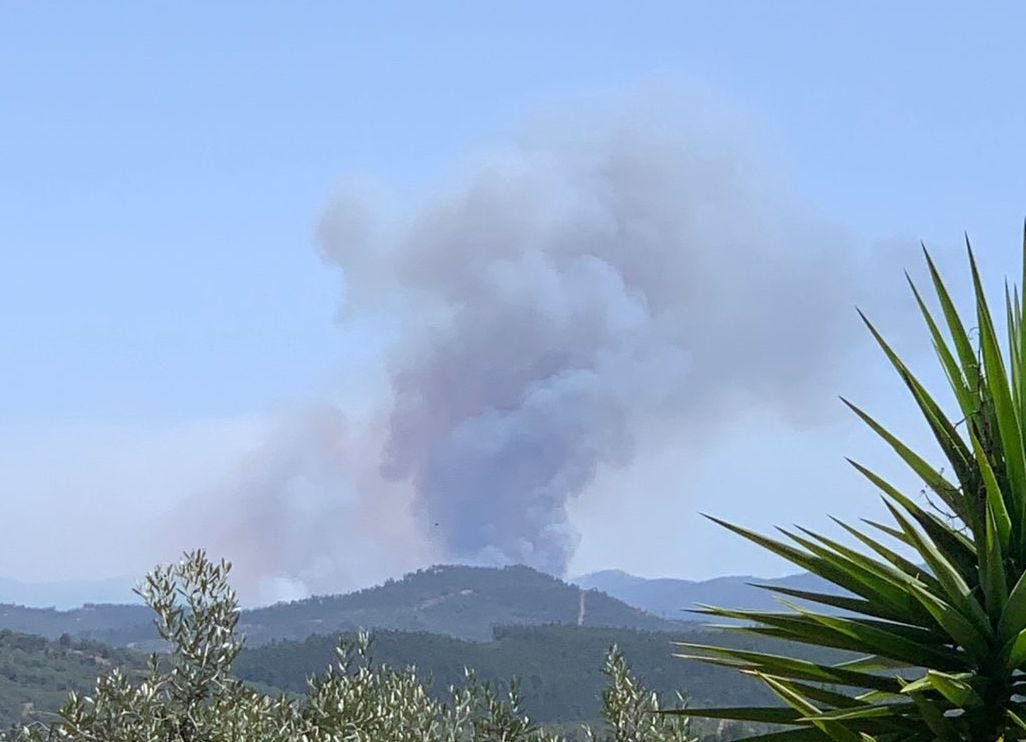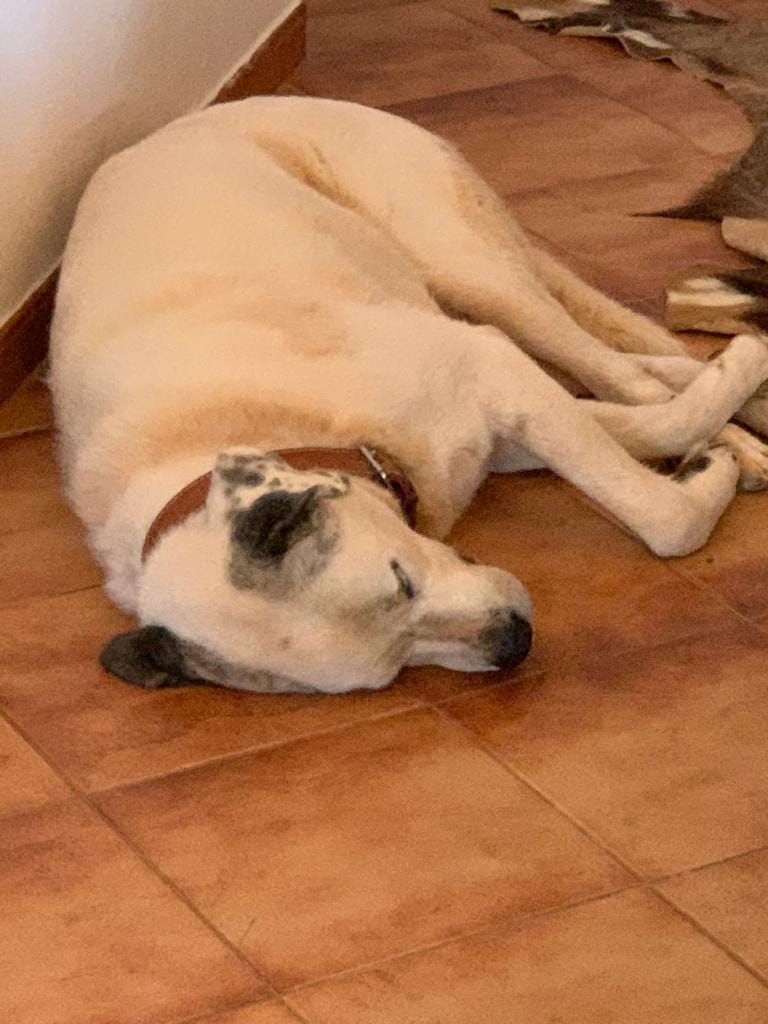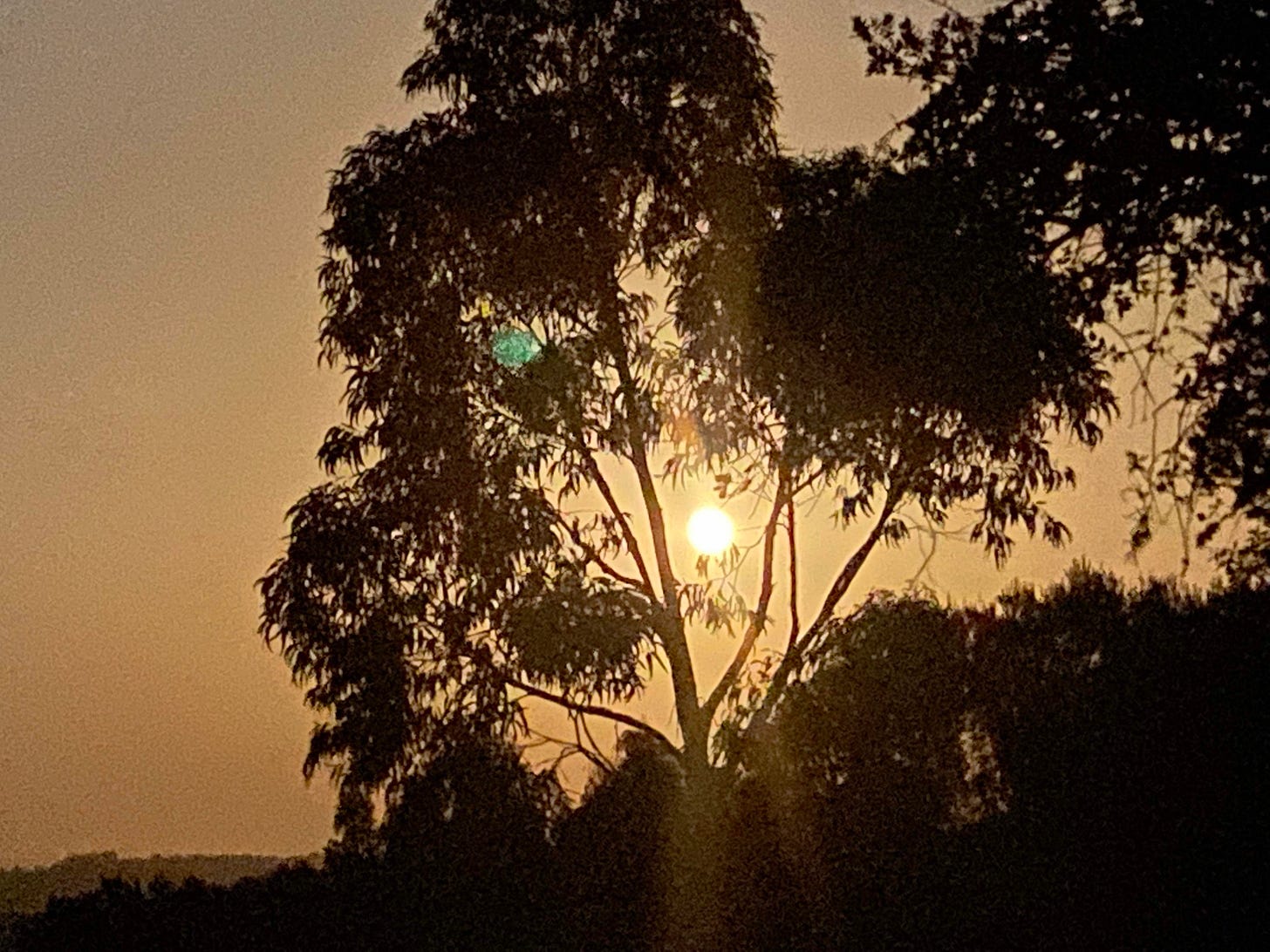The fire warning messages arrived a few days before, but the first photos of the burning hillside popped up on our phones while we were shopping in the Algarve.
It was our new neighbour Daniel who raised the alarm.
His years of Californian living meant he was already packing a grab bag and planning how to evacuate our dogs from the house and into his car as soon as he saw the first smoke signals.
The photos looked very scary: there were plumes of smoke and flames lapping the hillside just down the valley and we were more than an hour’s drive away.
We’d seen the recent terrifying images from Evia in Greece, from Italy and from Turkey…and had lived on the US West Coast during some of the big blazes.
The fire appeared to be very close and the plume of grey was already dominating the skyline.
The only thing in our favour was the prevailing wind.We’ve had some hot days this summer, but this was the first time the thermometer had reached the high 30s Celsius – and into the 40s in the Algarve and Alentejo’s interior.
Ever since the huge and historic Portuguese firestorms of 2017 and the wildfire that engulfed our landmark Monchique mountain a year later, fire is on everybody’s mind at this time of year.
Chainsaws aren’t allowed in the summer months – not that it makes any difference given that mine is still in the repair shop after I broke its heart a few months ago.
The police popped round in June to say our strimming efforts around the houses were in accordance with the new land clearing laws to protect property from fire.
But it’s a good reminder we have a lot of brush to clear on our new piece of property and some new fire breaks to create in the autumn and the spring…as it’s too late now.
Metal strimmer blades are currently off limits due to the risk of sparks, and barbecues are banned when the civil protection authority pings you as they had done by text the previous Sunday.
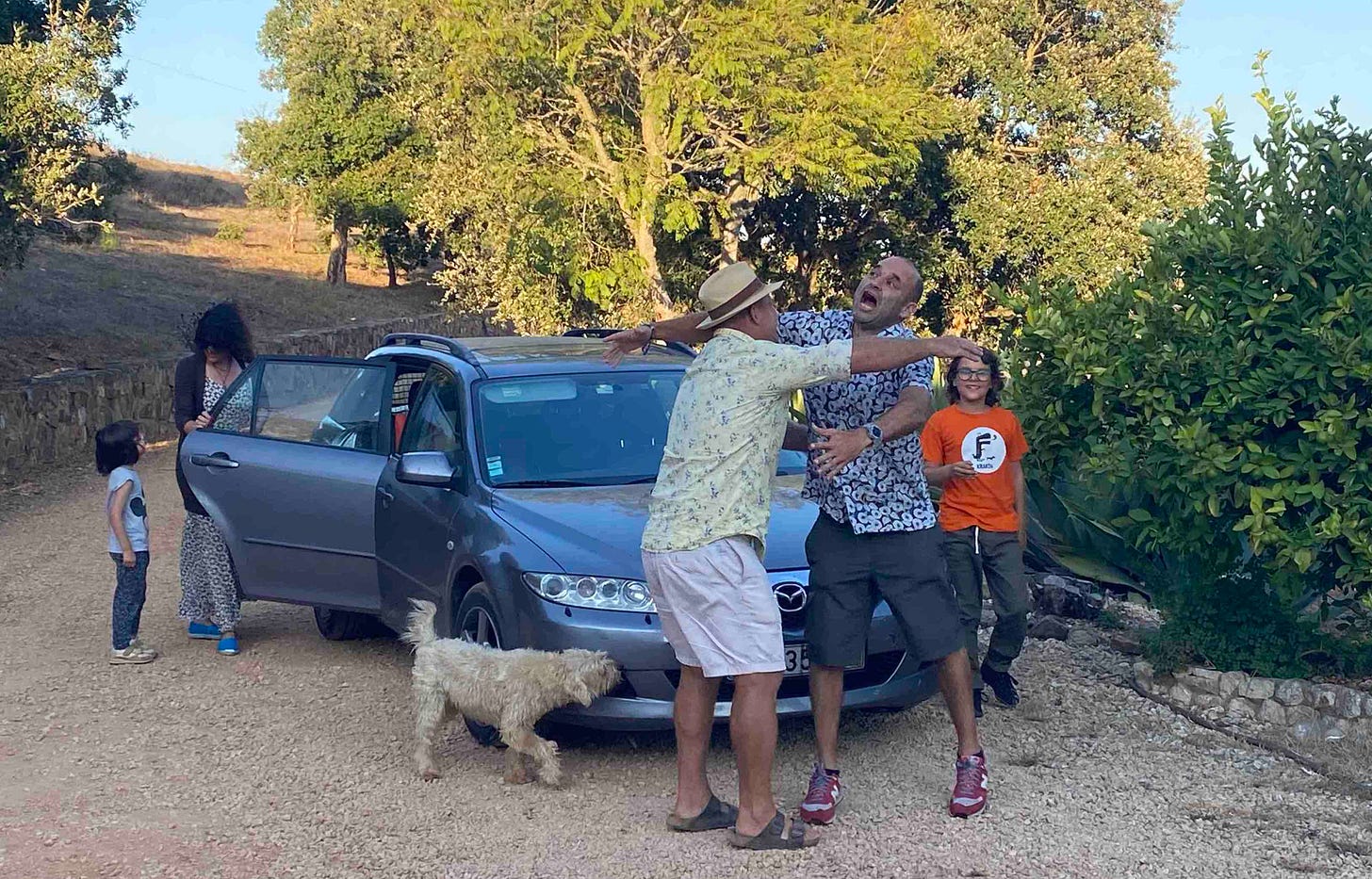
We’d heard about the 2018 Monchique fire from David, our neighbour at the nearby Orada retreat centre.
He recalled the billowing smoke and the nightly red glow on the horizon for seven days as he stood on his own hilltop hoping the wind would keep the fire at bay.
You can still see the scorched mountainsides today, three years later.
It inspired David to install emergency sprinklers – a smash-glass-here style system of water jets to soak his surroundings at short notice in an effort to protect his property.
He was one of the neighbours we messaged to find out how worried people in the area were.
“Scary as shit” said one; “still quite a long way off,” said another.
The WhatsApp groups started to come alive and we learned about fogos.pt – a brilliant app to track wildfires in real time.
The blaze was actually 17km way – but that’s still far too close for comfort.
Firefighters had scrambled from all around, aircraft were dropping water and as we emerged from a supermarket near Albufeira the sky was red as if the sun was setting too soon.
We had dinner plans nearby at the old family farm of former BBC colleague James Westhead, and as we arrived, the smoke from our fire – more than 50km away as the crow flies – was settling on the Algarve coast.
Ash was settling on the dinner table under the pomegranate trees and the air quality was dropping along with the visibility.
It wasn’t good for them, but it was a very good sign for us…
What we love about our part of Portugal is the ocean – the beaches and the breezes which keep us cool in the height of summer and warmer in the winter.
Most mornings there’s a layer of dew on Siouxsie the Suzuki’s seats (we really need to get her an easy-on, easy-off plastic roof to protect from that).
In a place where water is in short supply, the welcome moisture keeps things green and it makes early morning work easier before the mist lifts and the sun starts beaming down.
And however hot the day, we can rely on a north west wind from the Atlantic Ocean to sweep down the valley in the afternoons – some natural air conditioning to bring us refreshingly cool evenings.
It was 3pm when Daniel sent the photos and was starting to panic.
But the fire was to the south of us, and so we felt confident that unless something weird was going on with the weather we’d be OK.
It’s great to have lived in the valley long enough to have learned something like that.
I remember only two or three days in the last year when the wind came from the south east, because it brought a haze of Saharan sand which rained mud on everything and blocked our drinking water filter for days.
Smoke reaching the Algarve meant the wind was blowing the fire away from our house, but it also meant it was spreading quickly in Sabóia which is the next district over.
By that evening it had burned 600 hectares, and by the time it had been controlled more than two days later 1,100ha had been scorched.
But it could have been a lot worse.
According to the regional commander of Alentejo’s civil protection authority quoted in the Portugal Resident newspaper, it could have destroyed 6,000ha if it had not been for the “excellent performance of the men and women” who battled the flames.
Hundreds of firefighters scrambled – many of them from the volunteer Bombeiros brigades – and it seems that homes were protected and only one person injured.
The wet winter and the green of our trees might have lured us into a false sense of security, and so it’s been an eye-opening week which will surely make everyone extra-vigilant.
We were living in Menlo Park last year when the fires north of San Francisco brought a red haze and everyone started looking at the air quality app.
Yes, we were wearing face masks even before the pandemic came along!
It’s sobering to know that there’s little you can do when fire comes your way and it’s something we’ll have to get used to…and try to mitigate against.
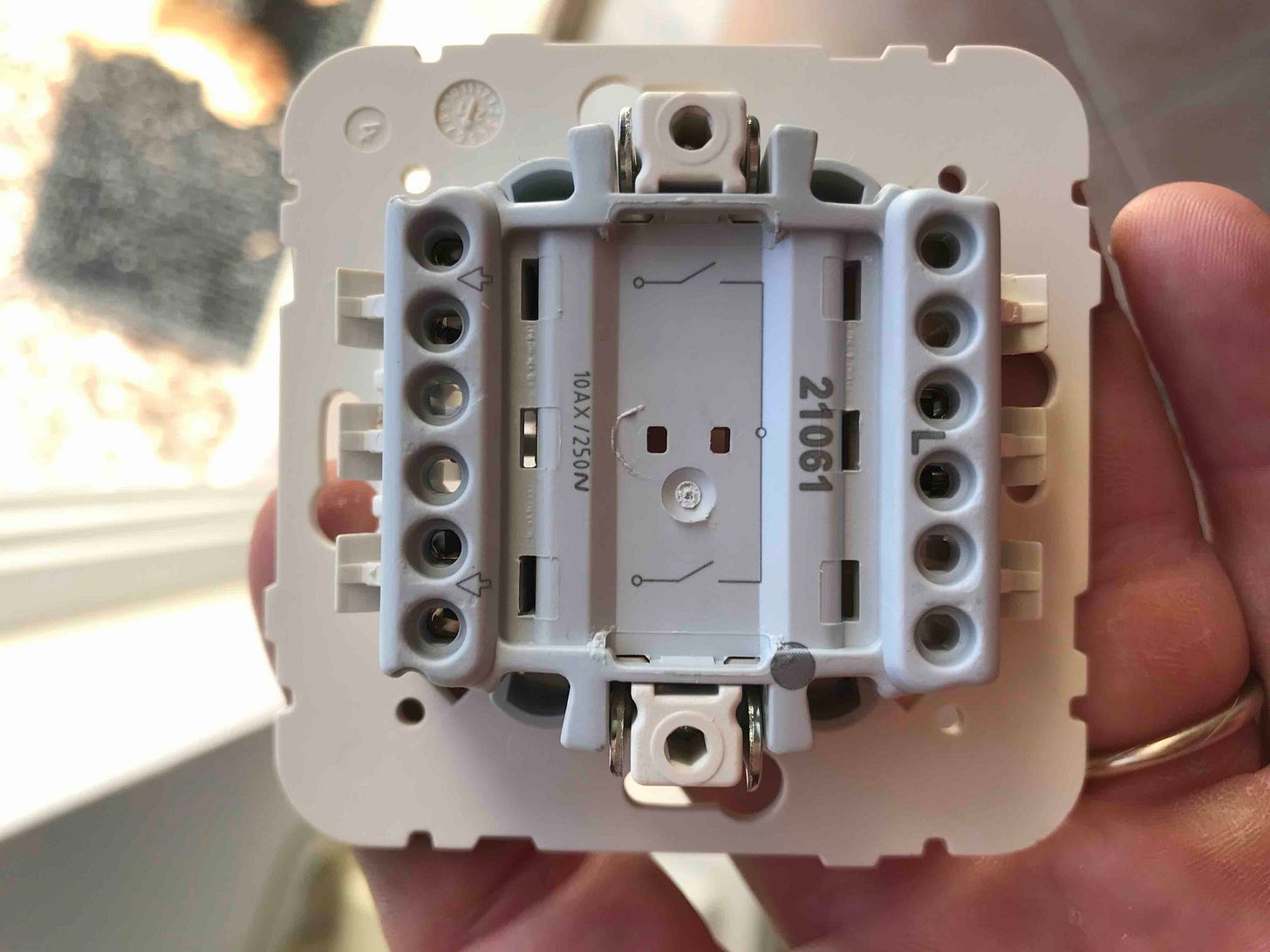
Now some THANKS…
to the firefighters – and to our prevailing wind – for keeping our valley and our neighbours safe.
to James Westhead, and his fabulous friends and family who treated us to a wonderful al fresco dinner amid the smoky haze and eerie red air…and who gave us some helpful hints about our building project.
On that note, after months of waiting, the “specialities” are finally finished, our quantities have been surveyed and we have some real figures to present to builders.
Our hope is that in the year since our initial budget plan was submitted we can still afford to build our off-grid lodge and live a more sustainable life (in more ways than one!).
to George Griffin for inviting me to a Salesforce/Vetforce Pull Up a Sandbag talk and Q&A about my former life as a BBC foreign correspondent and the transition to living off the grid in Portugal.
Vetforce is a community of military veterans at Salesforce – some of them Afghanistan vets.
It was a great opportunity to help me reflect on the terrible images coming out of Kabul where I lived for two and a half years from 2006-8 when British troops first arrived in Helmand.
So many people have so many mixed emotions about the Taleban take-over 20 years after they were ousted…and the trust betrayed and the hope lost amid the chaos of a rapid withdrawal.
to everyone who helped raise some money for Rory Stewart’s Crowdfunder.
I first met Rory in Afghanistan where he set up the Turquoise Mountain Trust after walking across the country.
It’s a well-connected organisation which I believe will get money to people on the ground quickly and effectively…if anyone is pondering making a donation.
and to the fabulous Christina Lamb in The Times for writing the one thing this week which helped give me a little hope: “We’re not about to give all this up for some Kalashnikov-wielding bumpkins” which I do hope is accessible beyond the Times’ firewall.
And finally…it’s perhaps good to remind ourselves that the Siberian fires are apparently bigger than all the others in the US and Europe combined…and this isn’t going to get better until we actually start taking climate change seriously.
Follow us on Facebook: Vale das Estrelas
And on Insta: @vale_das_estrelas

